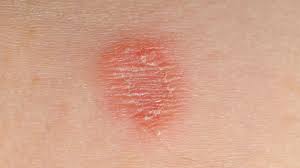Skin Lesion Symptoms

When a skin lesion appears, it may be an early indication of a serious ailment, such as skin cancer. It is important to have a skin cancer screening done by a dermatologist. Here is a skin lesion diagnostic table from the Primary Care Dermatology Society. If you have questions, ask your doctor. You should also discuss any new moles or irregular freckles with your dermatologist. Using this table, your doctor can check whether the lesion is harmless or cancerous.
Erythema multiforme
Most cases of erythema multiforme clear up on their own, but serious cases require medical attention. Treatment of the underlying infection is essential. Symptomatic relief may be obtained from standard treatment options, such as anesthetics, corticosteroids, and antihistamines. The affected area may also be numb by applying an anesthetic liquid. Intravenous fluids and nutrition are also administered. Antiviral medication may be necessary if herpes simplex is the source.
This condition usually occurs suddenly in otherwise healthy individuals. It manifests as a cluster of red, ridged, or blister-like lesions on the face, neck, soles of the feet, and trunk. It may also affect lips and mucous membranes in the mouth. If left untreated, erythema multiforme can progress into concentric circles. Symptoms of erythema multiforme may last from two to four weeks.
Keratoacanthoma
A keratoacanthoma is characterized by a rapidly growing, solitary, firm nodule on the skin. The lesion is usually skin-coloured, erythematous, and sharply demarcated. The lesion may also have a keratotic core that causes it to look like a crater. The lesion may be asymptomatic or may progress to a more serious form. Surgical removal of the keratoacanthoma is the usual course of treatment. However, if the lesion is atypical, it is possible that it will regress spontaneously.
In some cases, it may be necessary to perform surgery to remove it. However, if the lesion is small and does not cause any pain, it may heal on its own. Although the lesion is not life-threatening, it is important to seek treatment for it as early as possible. If left untreated, it may spread to the lymph nodes. The disease is often curable, but only if it is caught early.
Pemphigus vulgaris
The most common form of pemphigus vulgaris is a skin lesion characterized by pain and erosion. The most common site of involvement is the buccal mucosa, but it may also affect the face, anus, or vagina. In a biopsy, a suprabasilar blister with acantholysis is found. Acantholysis occurs due to a breakdown of cohesion between cells in the lower epidermis and results in a blister just above the basal cell layer. In some cases, pemphigus vulgaris is associated with eosinophilic spongiosis.
During a biopsy, a small sample of skin from the blister or the adjacent area may be used to confirm pemphigus. Histology will reveal the presence of keratinocytes that are separated from each other. A biopsy may also reveal antibodies and complement molecules on keratinocytes, which is indicative of pemphigus vulgaris. If you're concerned about pemphigus vulgaris skin lesions, you should see a dermatologist to find out the cause of the lesion.



